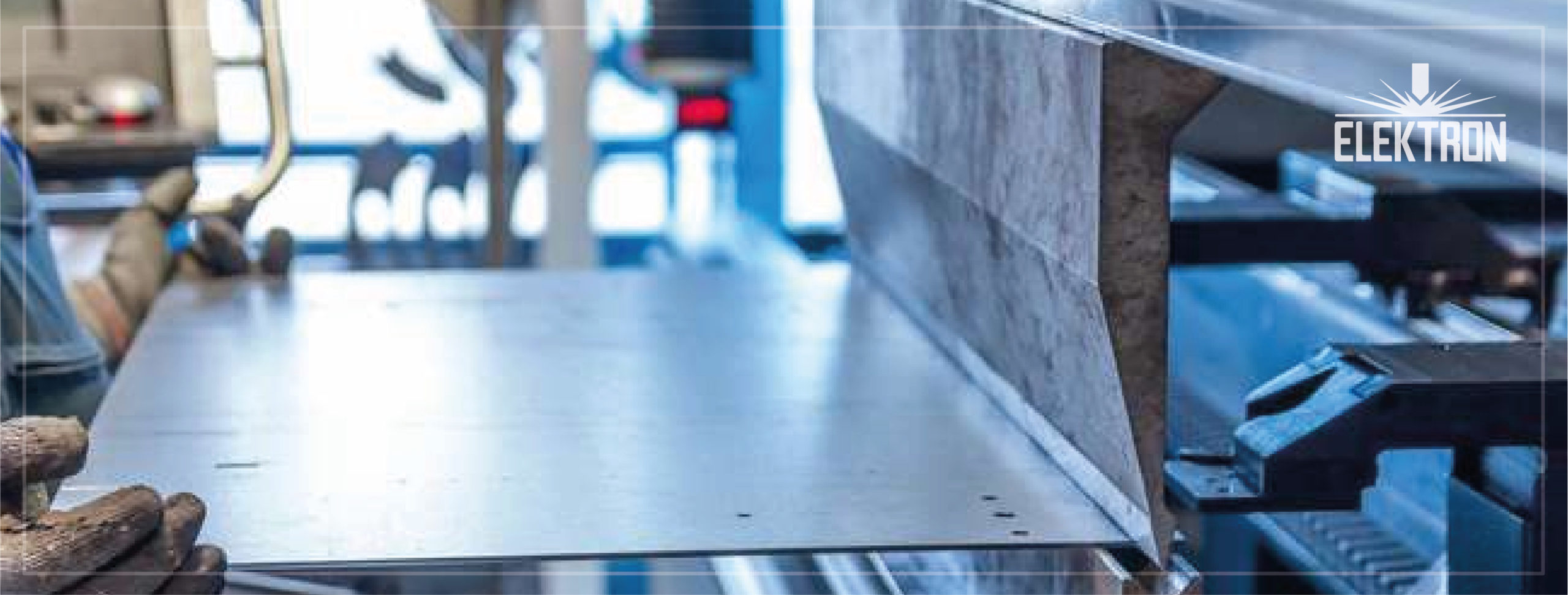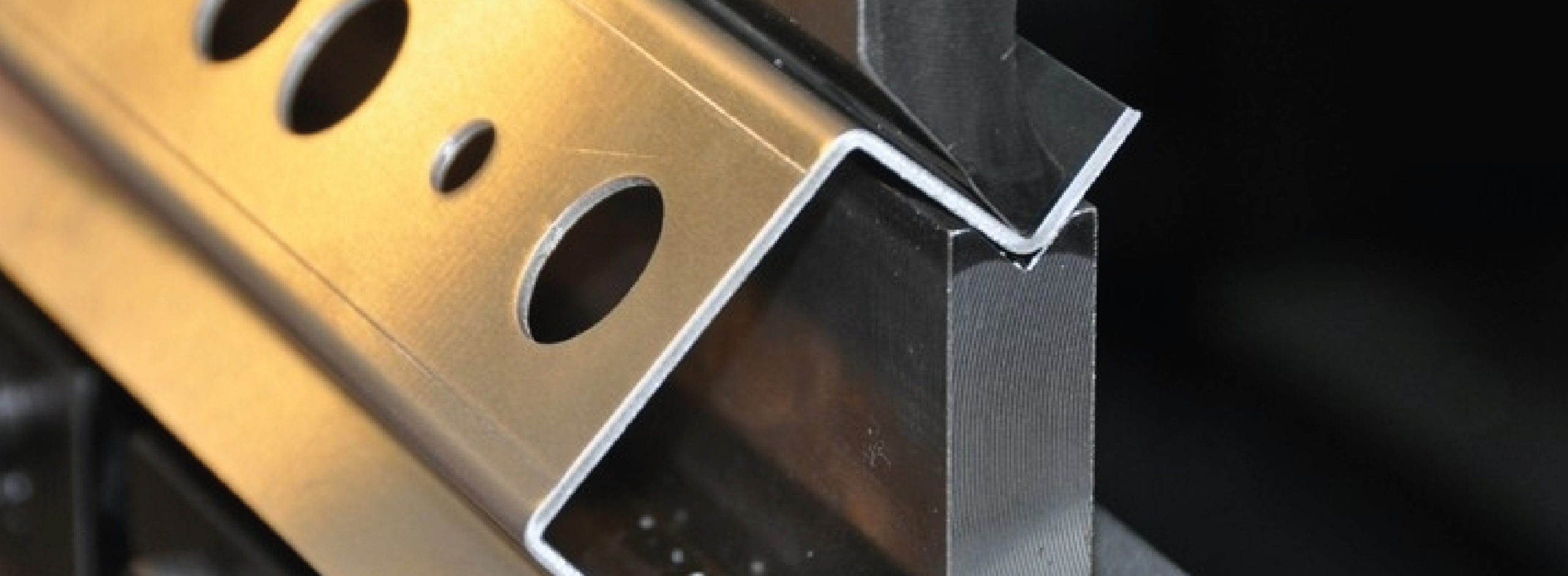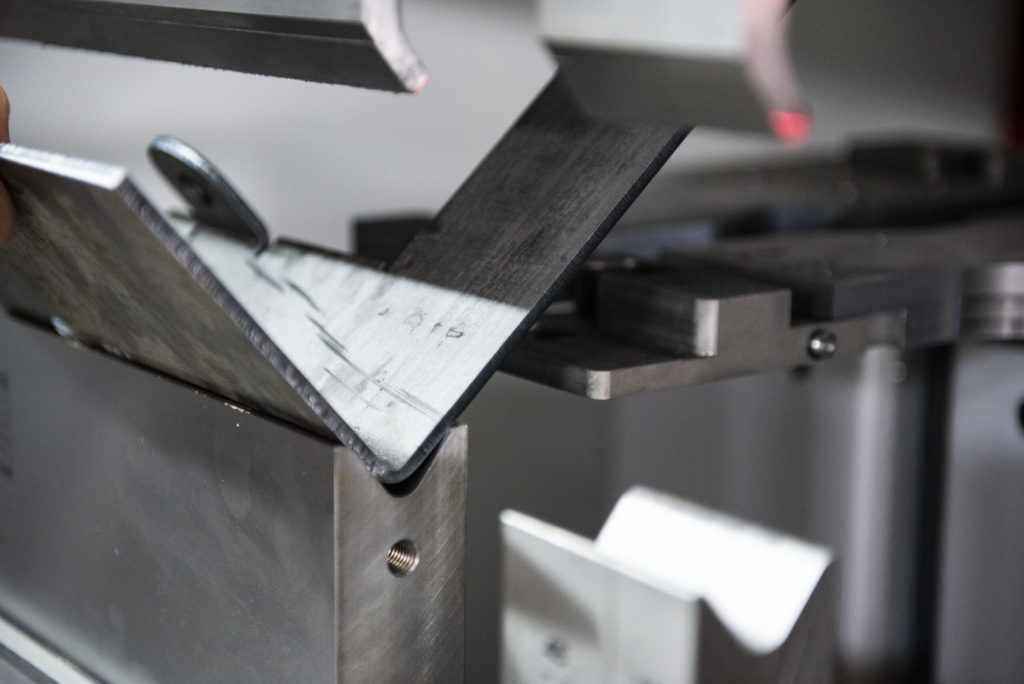
Sheet metal is one of the basic types of steel products, the specificity of which lies in the fact that the thickness of a given material is much smaller than its length and width. The sheet thickness ranges from a tenth of a millimetre to several tens of millimetres. The sheets can be smooth or have a surface texture and are delivered in the form of flat sheets or strips rolled into coils, which are then brought to the desired shape, size, and texture using one of the plastic working methods. Because this type of raw material is used in almost every industry, the appropriate technology for its processing is critical in the manufacturing processes of automobiles, hydraulics, construction, metal furniture, shipbuilding, mining, metallurgy, and many other popular areas.
Sheet metal bending with press brakes is currently one of the best and most efficient methods of plastic processing of this type of material, so we decided to talk a bit about the specificity of this processing method.

What is sheet bending with a press brake?
The technology of bending sheet metal requires impact on the plane, the shape of which we want to change to our needs with an appropriate force. As a result, we obtain a ready sheet of metal with a permanently changed curvature. Importantly, bending does not change the thickness of the sheet itself. By using the bending technique, which belongs to the forms of plastic working, we can obtain many different complex shapes, for example, those that are characterised by a large number of bends and cavities. Bending, straightening, and coiling sheets of various thicknesses are among the activities associated with the bending process. Sheet metal bending using press brakes is a procedure that consists of forming flat sheet metal parts into the desired shape with the use of specialised tools, such as press brakes. The technique consists of placing the workpiece on a special die with a V-shaped hole, and then the punch exerts pressure on the sheet, which causes it to bend. Press brakes are widely used for processes such as bending stainless steel sheets, steel sheets, and aluminium sheets.
What are the advantages of sheet metal bending press brakes?
Precision
Sheet metal bending with press brakes guarantees remarkable precision of deformation. Automatic press brakes offer the highest coefficient of repeatability of manufactured elements available on the market and detailed bending of sheets of various thicknesses, based on even the smallest parameters. Press brakes are perfect for the provision of services consisting of bending steel or stainless steel sheets, which may otherwise be a bit troublesome. The use of a high-quality bending machine guarantees the precision of shaping items at the highest level.
Repeatability
Sheet metal bending with press brakes enables mass production of suitably matched sheet metal elements based on the specificity of customer requirements. This is one of the biggest advantages of this machining method in the manufacturing industry, as it guarantees mass order fulfilment without compromising on quality. Sheet metal bending with the use of press brakes is a way to optimise production processes due to the possibility of mass production, bending precision, and relatively fast lead times. On the other hand, an additional advantage is the undoubtedly low price of the service and the elimination of the possibility of errors in implementation by almost complete automation of the bending process.

Which processes and materials should press brakes be used for:
- Bending aluminium sheets
- Steel sheet bending,
- The bending of stainless steel sheets
- bending sheets made of these metal alloys

